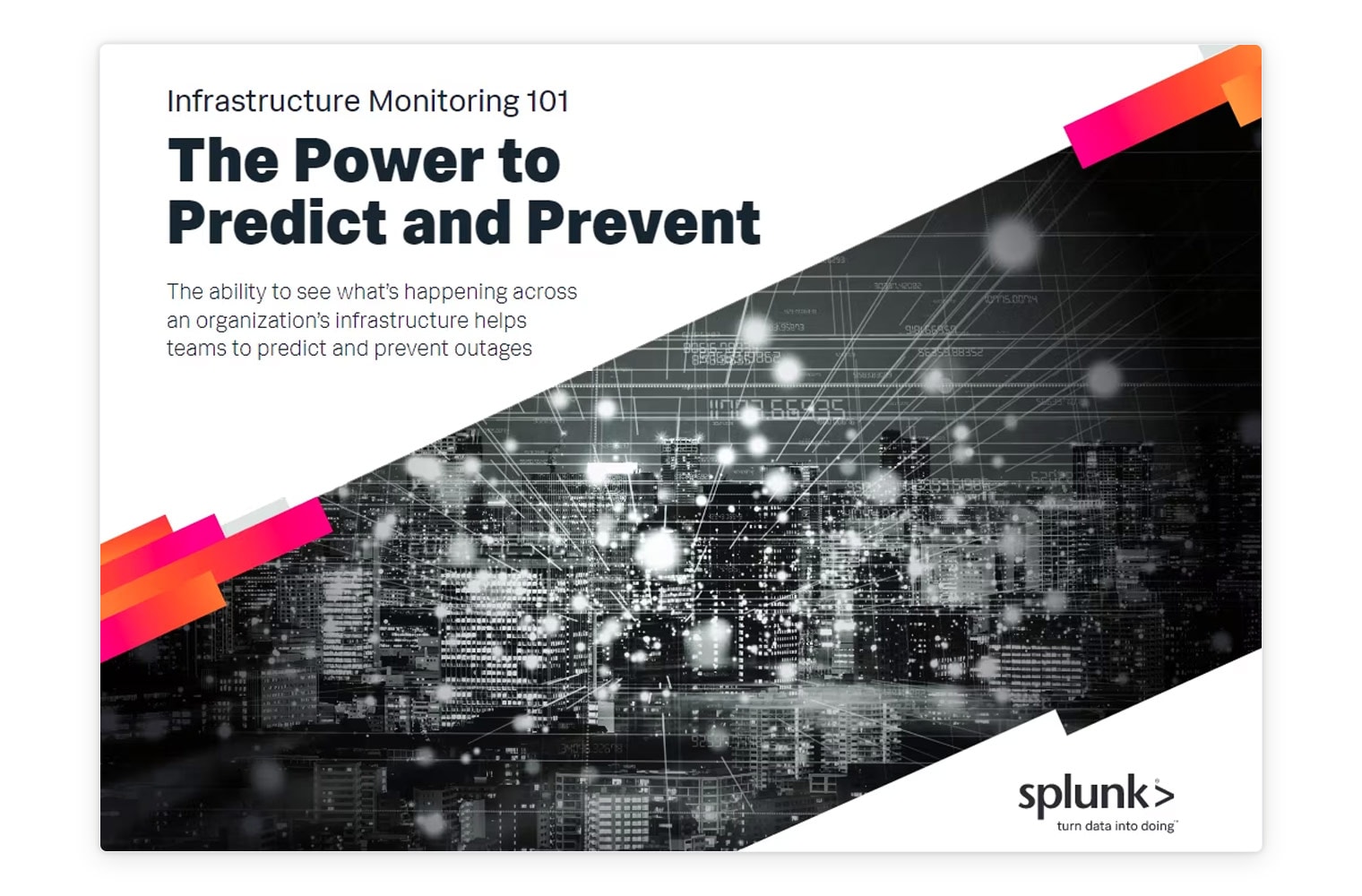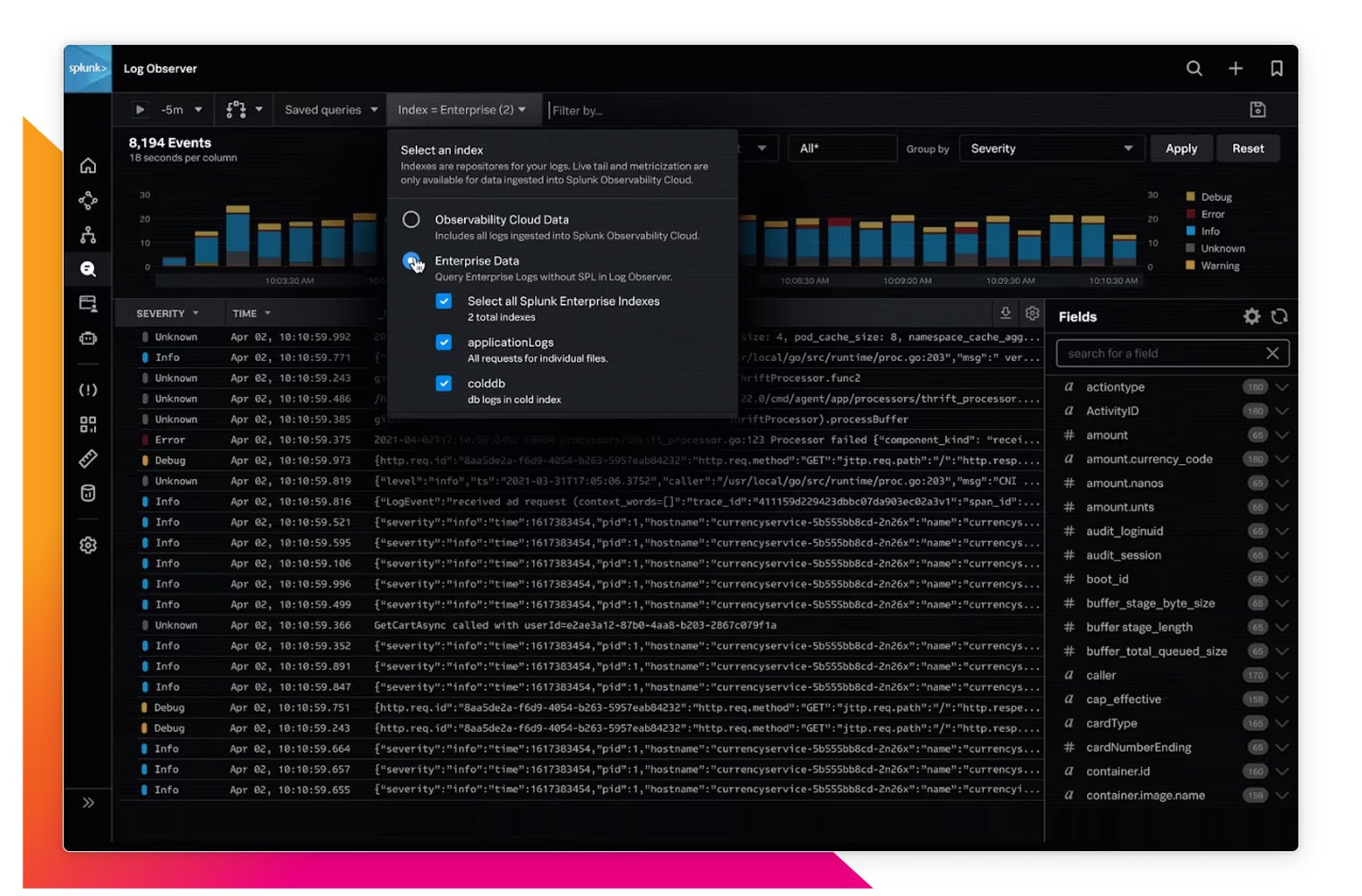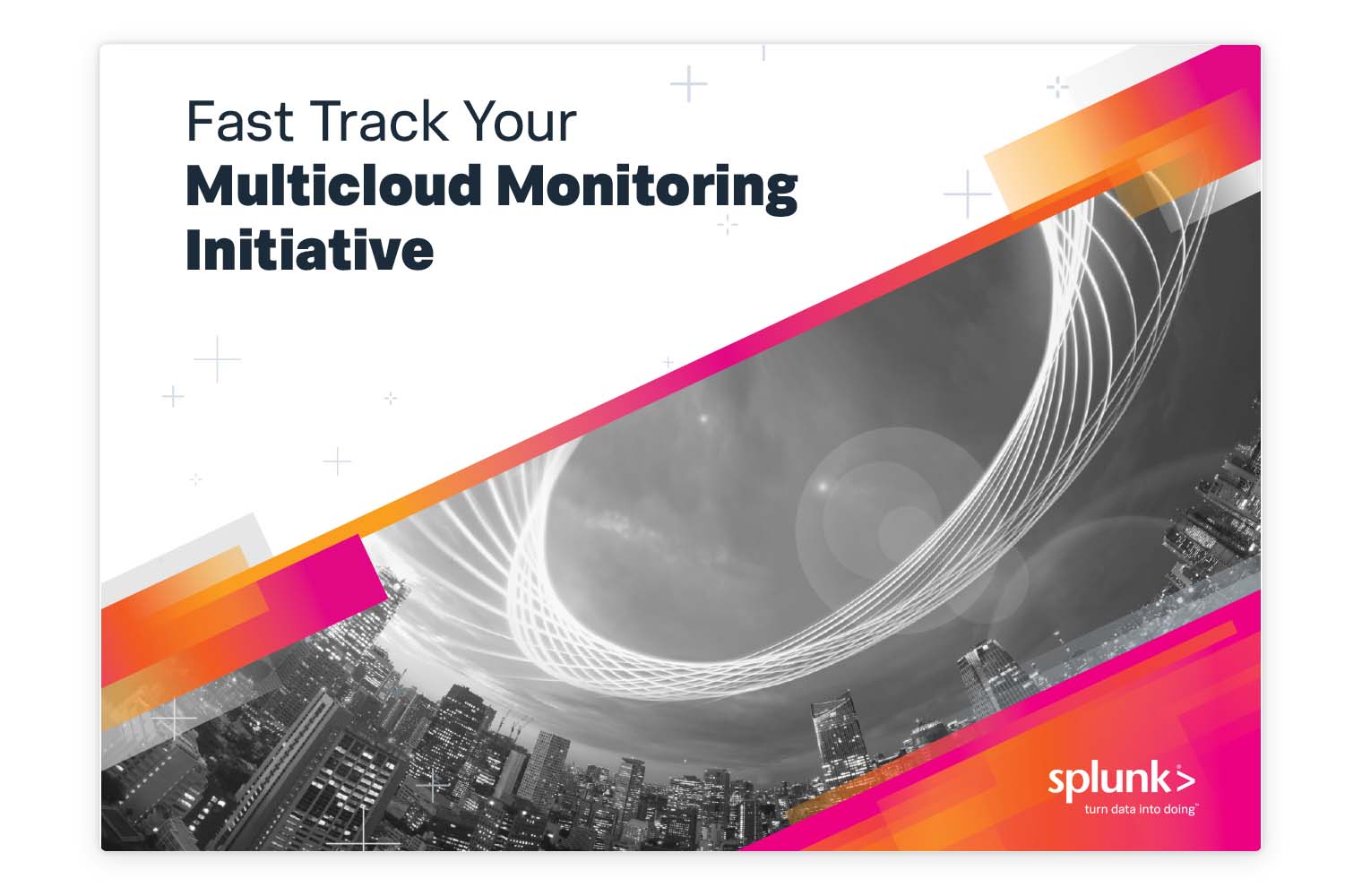Instant visibility and accurate alerts for improved hybrid cloud performance.
solution
Leverage real-time metrics and native support for cloud environments
Increase cloud visibility
Get a clear picture of your entire stack with standardized data collection and near-instant visibility to cloud performance.
Never miss an incident
Proactively observe your cloud infrastructure and leverage real-time analytics to increase the timeliness of alerts.
Maximize your data value
Seamless integration between all your Splunk data sources enables you to re-use Splunk logs for observability use cases.

Real-time streaming analytics to immediately surface anomalies
Splunk’s purpose-built streaming architecture ingests data from any source at petabyte scale and processes metrics with a resolution as fine as one second to eliminate blind spots. SignalFlow provides the flexibility to take any combination of custom or standard metrics and issue alerts based on any logic to identify all anomalies.
Empowering our technologists with strategic tools like Splunk Cloud Platform and Splunk Infrastructure Monitoring means they're not looking for a needle in a haystack.
No-code log integration in a single UI to optimize data usage
Ingest your logs once and use them anywhere for faster in-context troubleshooting and deep root cause analysis. Splunk Log Observer Connect, built into Observability Cloud, seamlessly brings logs from the Splunk Platform into dashboards and troubleshooting workflows in a simple, no-code UI.


OOTB visibility to cloud services to speed issue detection
Splunk expands visibility to the cloud in minutes with hundreds of out-of-the-box integrations, prebuilt dashboards, automatic detectors and alerts for Kubernetes, containerized environments and other cloud services. Built-in AI/ML capabilities quickly pick up any incidents.
Splunk is a great investment for us, as it remarkably improves our operational efficiency and achieves better team collaboration. Our operations team troubleshoots issues much faster than ever before.
